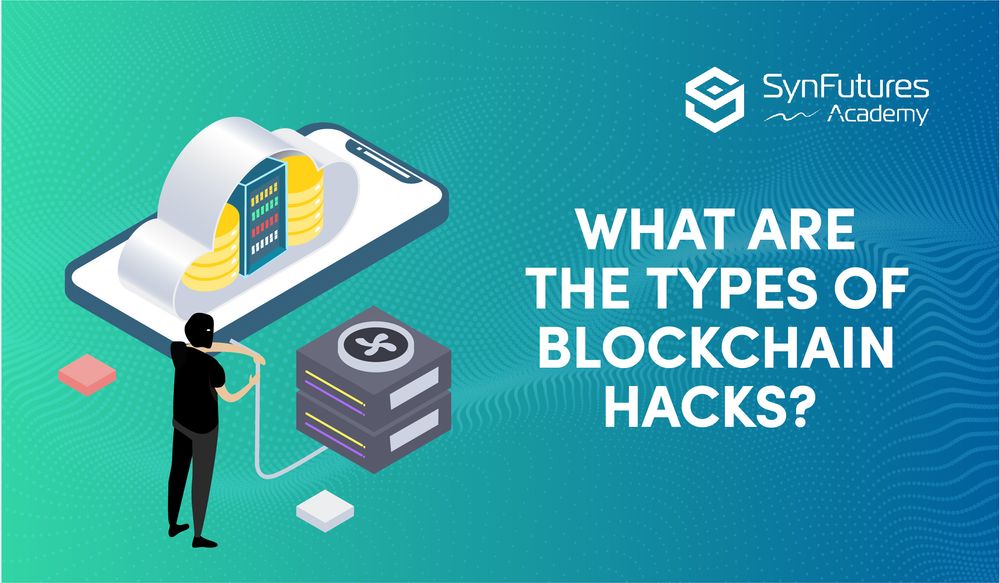Blockchain Hacks: What Are They and How Do They Work?
Key Takeaways
- Blockchain technology has several attack vectors, primarily due to its early state.
- They are various hacks or exploits for the different blockchain architecture layers, such as the infrastructure, data, network, consensus, and application layers.
Introduction
According to CertiK, a blockchain auditing company, over $2 billion has been exploited from web3 in 2022—more than all of 2021 combined. The losses underscore the risks associated with being an early adopter of blockchain technology. Despite its immeasurable use cases, there are underlying risks that have earned the industry the moniker “The Wild West.”
It is worth noting that the insecurity in the blockchain industry is largely due to its newness. Blockchain is still in its infancy. And as a technology endeavoring to disrupt several large industries and institutions (like finance and governance), its extended applications naturally come with several attack vectors.
This article discusses the diverse types of blockchain hacks – what they are and how they work.
51 Percent Attack
The 51 percent attack, also known as a majority attack, is a network attack where a single entity can control most of the network’s block-producing rights. This is the hash rate (computing power) for proof-of-work blockchains or staked amount for proof-of-stake blockchains. Exploits that a 51 percent attacker can do include.
- Manipulation of transactions order.
- The attacker can revert transactions within the attack duration, leading to a double-spending problem.
- The attacker can deter other miners from mining on the network and prevent transactions from being confirmed.
The actions of a 51 percent attacker are limited despite the ability to cause much damage. The attacker cannot reverse recorded transactions, prevent new transactions from being created, mint themselves new coins, or steal other users' assets.
Sybil Attack
A Sybil attack is a malicious occurrence where an attacker undermines a network by creating multiple accounts, nodes, or computers to control a disproportionately large amount of influence over the network. With enough sybil (fake) identities, the attacker can vote out honest nodes and gain total control to transmit or reject blocks. Effectively banning other users from the network. A large-scale Sybil attack can lead to a 51% attack if the attack manages to control most of the network nodes.
Routing Attack
A routing hack is an elaborate attack that leverages the blockchain's exposure to the current internet infrastructure. It involves intercepting the data sent to an Internet Service Provider (ISP), preventing nodes from freely communicating with each other. This interception splits the network nodes into partitions, resulting in parallel blockchains. These individual partitions continue to operate as expected and are unaware of the split. Meanwhile, the attacker loads up the largest partition with many malicious transactions before the partitions are merged back into one network. After the attack, all mined blocks with their associated transactions and miners' rewards in the smaller partitions will be discarded, permanently adding the malicious blocks to the main network.
Typosquatting
Typosquatting, also known as URL hijacking, is an attack where an imitation of a legitimate website is created to mislead unsuspecting users to submit sensitive data such as passwords and private keys. The attacker then uses this information to exploit the user’s account. Anything from asset theft to wallet destruction can come from a typosquatting attack.
Phishing
Phishing is a hack where the attacker attempts to trick the target into handing out their confidential data through malicious links disguised as genuine information. These disguises can be in the form of an email, image link, website ad, etc. The goal and result of Phishing are like Typosquatting; the attacker aims to gain access to the account of the victim, and anything from asset theft to account destruction is on the table.
Smart Contract Exploits
Smart contracts are pieces of code stored on a blockchain that run when predetermined conditions are met. They are typically used to automate a wide range of transactions. These are usually financial transactions – in the context of decentralized finance. Human-written programs are likely to have bugs and architecture oversights that, if not found and fixed early, could be exploited by hackers. There are several types of smart contract exploits. A typical example is Flash loan attacks, which exploit uncollateralized loans.
Conclusion
Blockchain technology has established itself as a force to reckon with, and it is well-positioned to revolutionize the world. But like every innovation, there will be challenges on the path to realizing its full potential. This article covered the nature of some technical challenges plaguing the industry. In our next article, we will be discussing how blockchain protocols handle these challenges and how you can protect yourself as an investor/user.
Discover SynFutures' Crypto Derivatives products: www.synfutures.com/.
Disclaimer: SynFutures Academy does not guarantee the reliability of the site content and shall not be held liable for any errors, omissions, or inaccuracies. The opinions and views expressed in any SynFutures Academy article are solely those of the author(s) and do not reflect the opinions of SynFutures. The SynFutures Academy articles are for educational purposes or information only. SynFutures Academy has no relationship to the projects mentioned in the articles, and there is no endorsement for these projects. The information provided on the site does not constitute an endorsement of any of the products and services discussed or investment, financial, or trading advice. A qualified professional should be consulted prior to making financial decisions.




